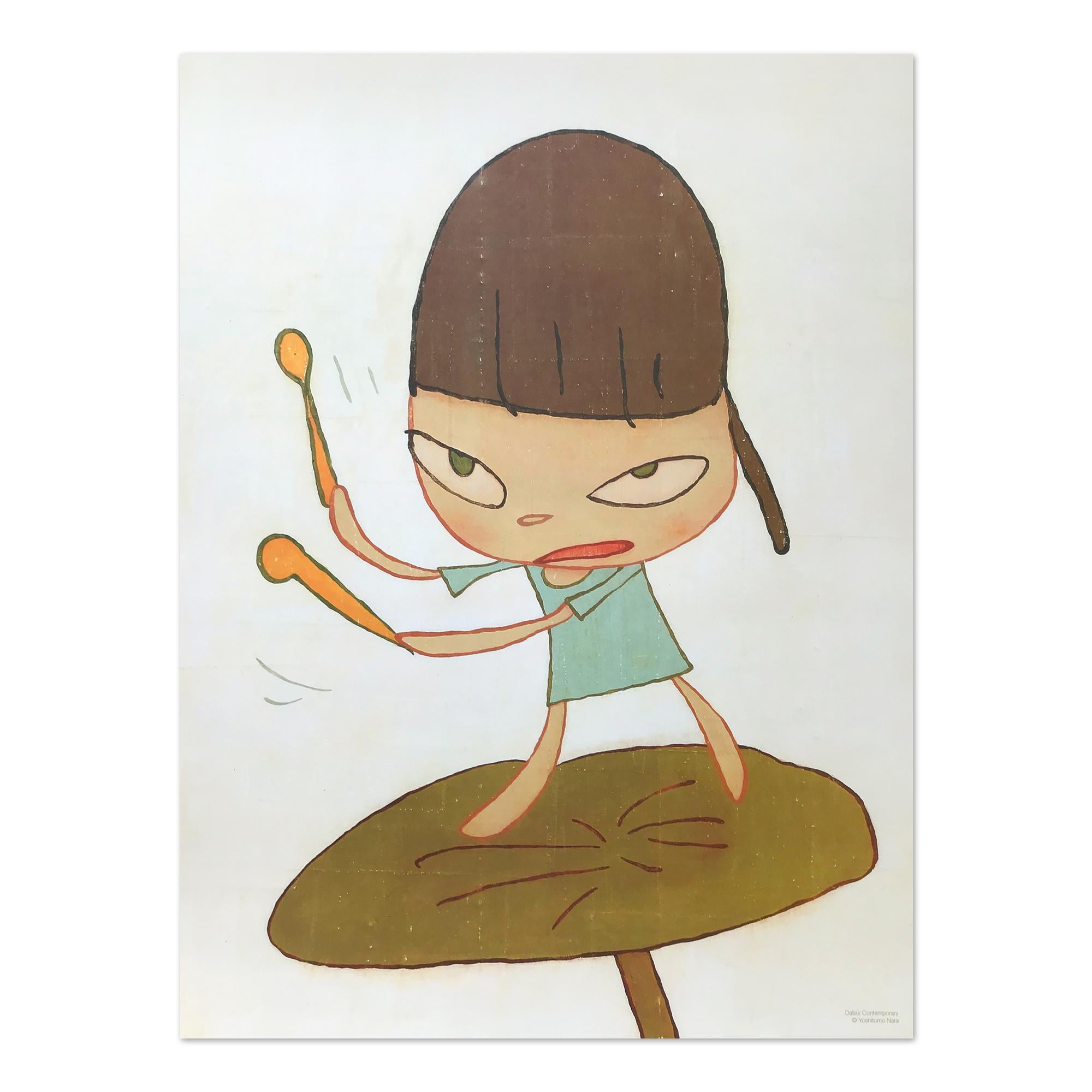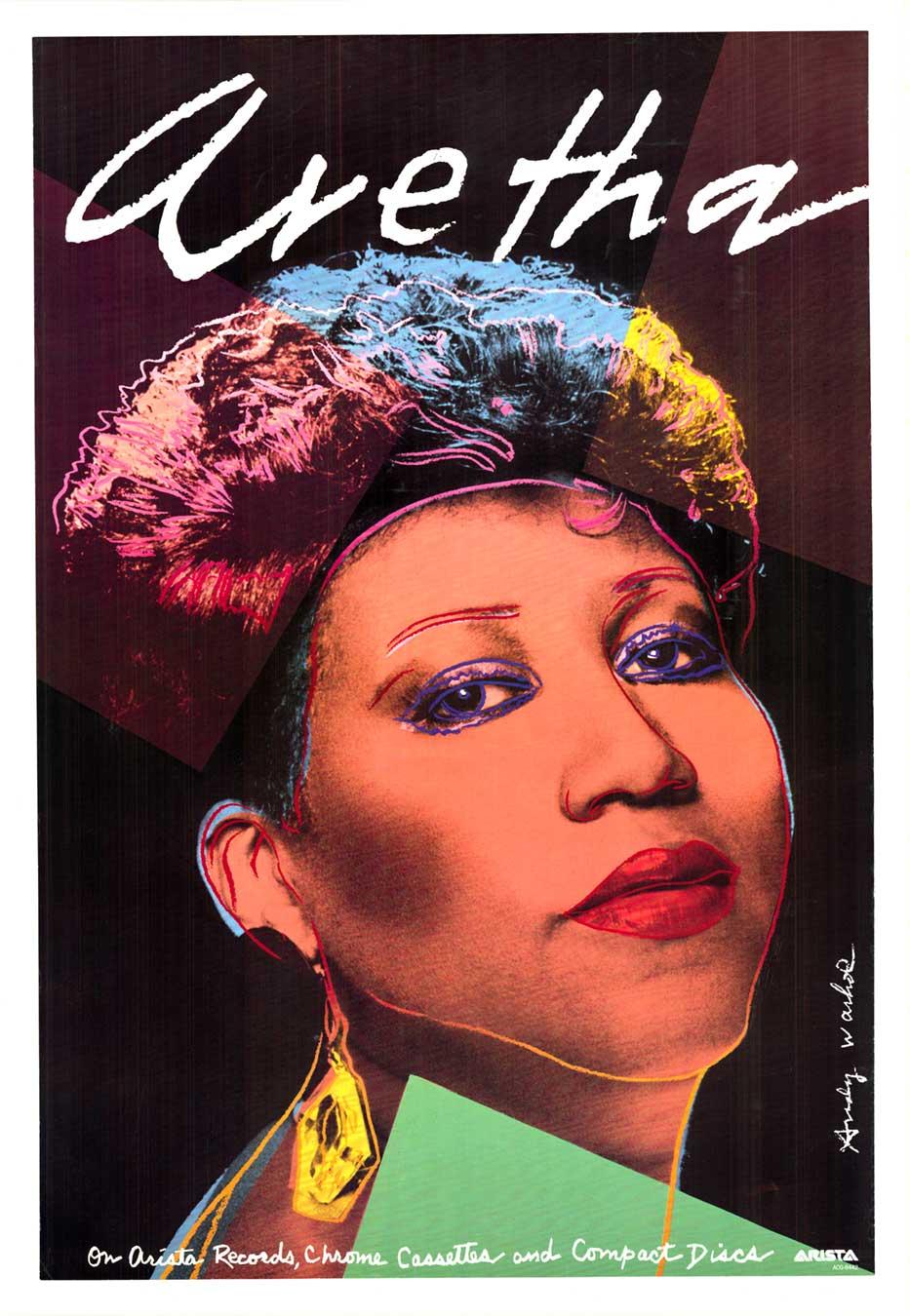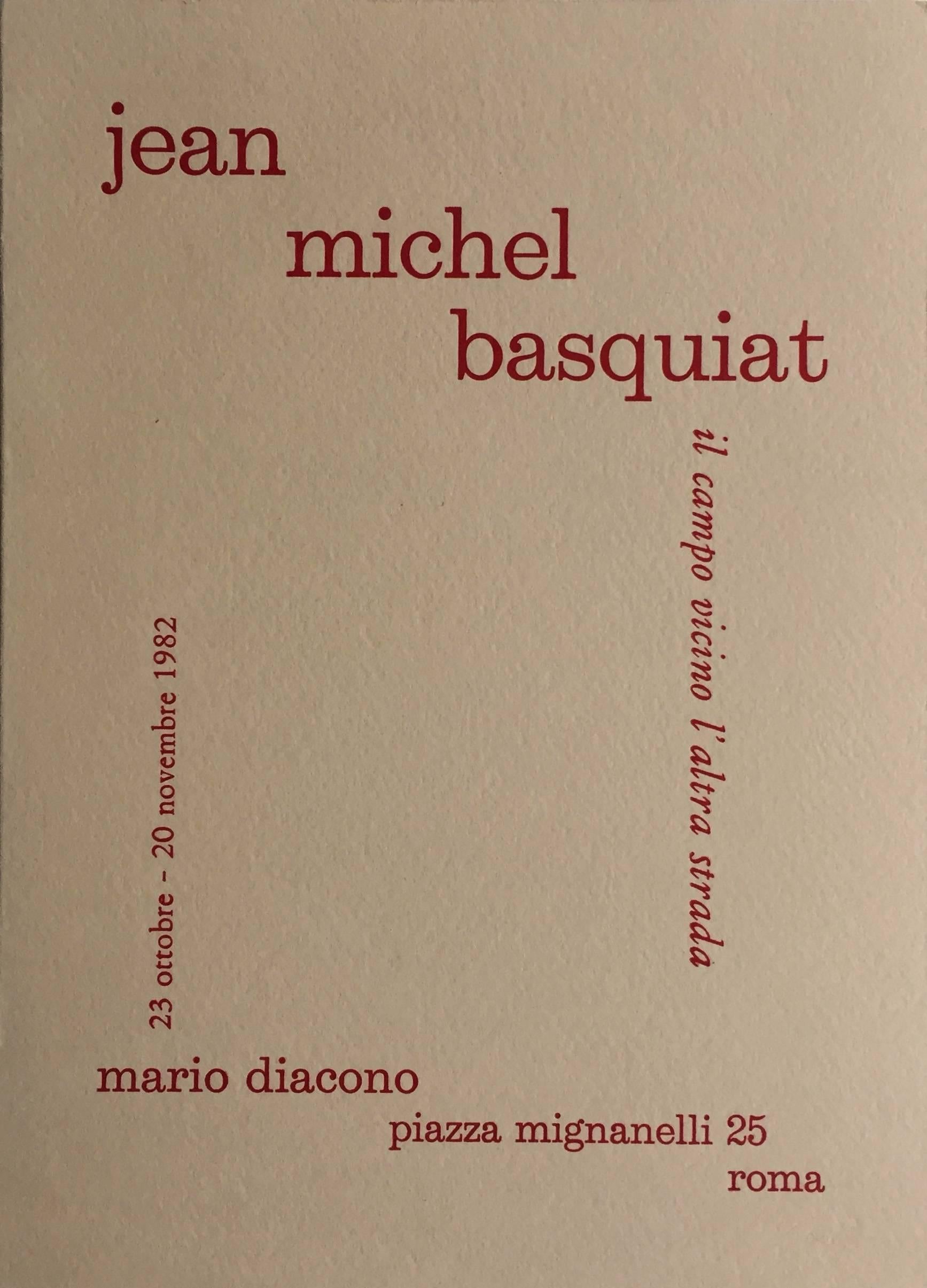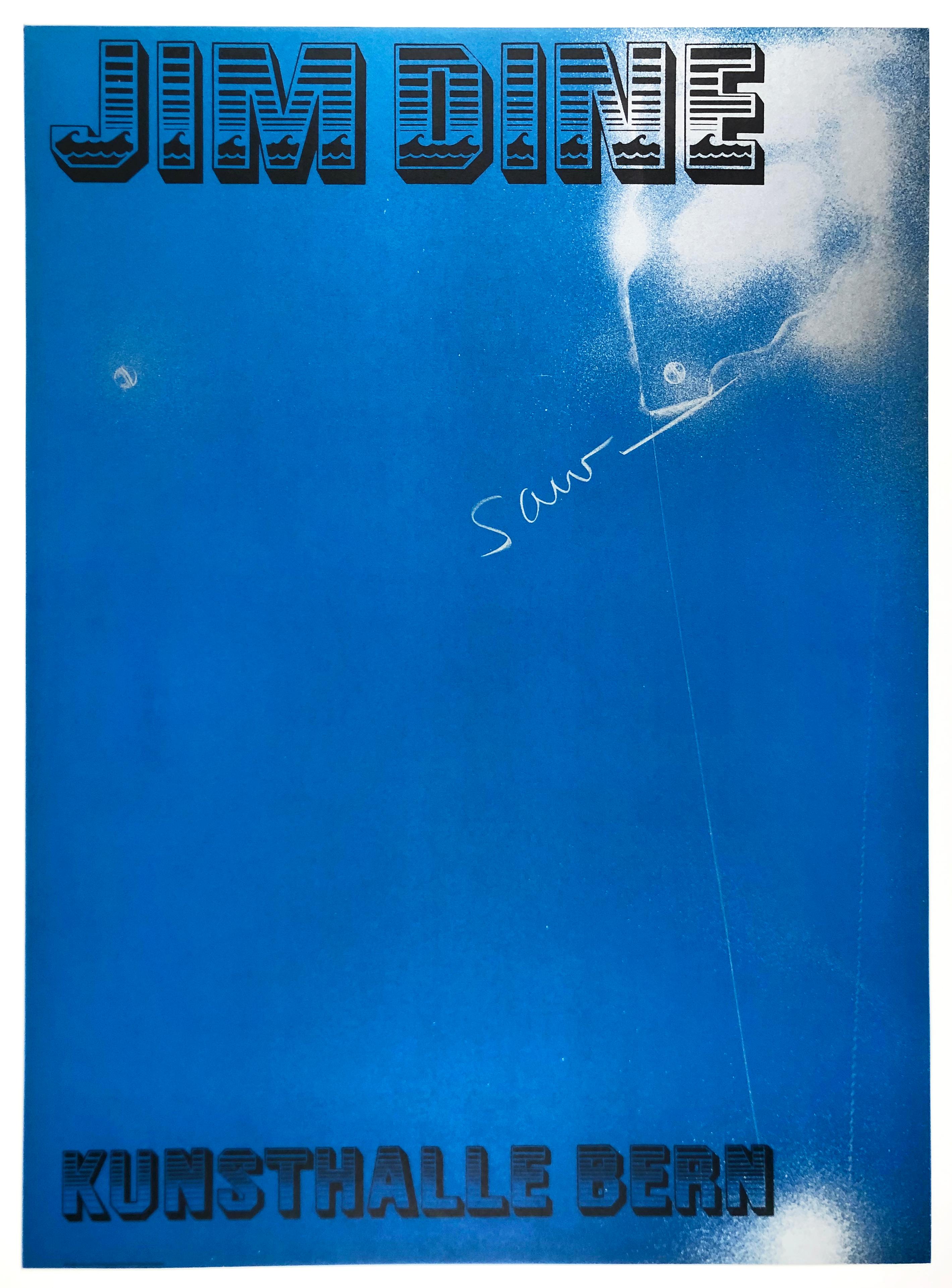Items Similar to As I Opened Fire Poster - complete triptych
Want more images or videos?
Request additional images or videos from the seller
1 of 11
(after) Roy LichtensteinAs I Opened Fire Poster - complete triptychafter 1966
after 1966
About the Item
after Roy Lichtenstein
Title: As I opened Fire Poster
Dimensions: 64 x 52 cm
This work was conceived in 1966 and published by the Stedelijk Museum, Amsterdam after the original painting of the same title. This impression is from one of several editions of over 3,000 printed after 1966
Roy Lichtenstein
Roy Lichtenstein, American painter, sculptor, and printmaker, startled the art world in 1962 by exhibiting paintings based on comic book cartoons.
Early life
Roy Lichtenstein was born in New York City on October 27, 1923, the son of Milton and Beatrice Werner Lichtenstein. His father owned a real estate firm. Lichtenstein studied with artist Reginald Marsh (1898–1954) at the Art Students League in 1939. After graduating from Benjamin Franklin High School in New York City, he entered Ohio State University. However, in 1943 his education was interrupted by three years of army service, during which he drew up maps for planned troop movements across Germany during World War II (1939–45; a war in which Great Britain, France, the Soviet Union, and the United States fought against Germany, Japan, and Italy). Lichtenstein received his bachelor of fine arts degree from Ohio State University in 1946 and a master of fine arts degree in 1949. He taught at Ohio State until 1951, then went to Cleveland, Ohio, to work. In 1957 he started teaching at Oswego State College in New York; in 1960 he moved to Rutgers University in New Jersey. Three years later he gave up teaching to paint full-time.
Early works
From 1951 to about 1957 Lichtenstein's paintings dealt with themes of the American West—cowboys, Native Americans, and the like—in a style similar to that of modern European painters. Next he began hiding images of comic strip figures (such as Mickey Mouse, Donald Duck, and Bugs Bunny) in his paintings. By 1961 he had created the images for which he became known. These included advertisement illustrations—common objects such as string, golf balls, kitchen curtains, slices of pie, or a hot dogs. He also used other artists' works to create new pieces, such as Woman with Flowered Hat (1963), based on a reproduction of a work by Pablo Picasso (1881–1973). He also created versions of paintings by Piet Mondrian (1872–1944), Gilbert Stuart's (1755–1828) portrait of George Washington (1732–1799), and Claude Monet's (1840–1926) haystacks.
Lichtenstein was best known for his paintings based on comic strips, with their themes of passion, romance, science fiction, violence, and war. In these paintings, Lichtenstein uses the commercial art methods: projectors magnify spray-gun stencils, creating dots to make the pictures look like newspaper cartoons seen through a magnifying glass. In the late 1960s he turned to design elements and the commercial art of the 1930s, as if to explore the history of pop art (a twentieth-century art movement that uses everyday items). In 1966 his work was included in the Venice (Italy) Biennale art show. In 1969 New York's Guggenheim Museum gave a large exhibition of his work.
Tries different styles
The 1970s saw Lichtenstein continuing to experiment with new styles. His "mirror" paintings consist of sphere-shaped canvases with areas of color and dots. One of these, Self-Portrait (1978), is similar to the work of artist René Magritte (1898–1967) in its playful placement of a mirror where a human head should be. Lichtenstein also created a series of still lifes (paintings that show inanimate objects) in different styles during the 1970s. In the 1980s and 1990s, Lichtenstein began to mix and match styles. Often his works relied on optical (relating to vision) tricks, drawing his viewers into a debate over the nature of "reality." The works were always marked by Lichtenstein's trademark sense of humor and the absurd.
Lichtenstein's long career and large body of work brought him appreciation as one of America's greatest living artists. In 1994 he designed a painting for the hull of the United States entry in the America's Cup yacht race. A series of sea-themed works followed. In 1995 the Los Angeles County Museum of Art launched a traveling exhibition, "The Prints of Roy Lichtenstein," which covered more than twenty years of his work in this medium.
In a 1996 exhibition at New York City's Leo Castelli gallery, Lichtenstein unveiled a series of paintings, "Landscapes in the Chinese
Style," which consisted of delicate "impressions" of traditional Chinese landscape paintings. The series was praised for its restraint (control), as common Lichtenstein elements, such as the use of dots to represent mass, were used to support the compositions rather than to declare an individual style. Lichtenstein died on September 29, 1997, in New York City, at the age
- Creator:(after) Roy Lichtenstein (1928, American)
- Creation Year:after 1966
- Dimensions:Height: 25.2 in (64 cm)Width: 20.48 in (52 cm)Depth: 0.04 in (1 mm)
- Medium:
- Movement & Style:
- Period:
- Condition:
- Gallery Location:Collonge Bellerive, Geneve, CH
- Reference Number:1stDibs: LU16121655723
(after) Roy Lichtenstein
Roy Fox Lichtenstein (1923 – 1997) was an American pop artist. During the 1960s, he became a leading figure in the new art movement. He was heavily inspired by the comic strip as a visual medium, in particular the presence of the "Ben-Day" dots that are a result of the color and tone distillation of inexpensive printing. He described pop art as "not 'American' painting but actually industrial painting". Lichtenstein had his first one-man show in New York in 1962; the entire collection was bought by influential collectors before the show even opened. He would never take himself too seriously: "I think my work is different from comic strips — but I wouldn't call it transformation; I don't think that whatever is meant by it is important to art." When first exhibited, many art critics challenged its originality. His work was harshly criticized as vulgar and empty. The title of a Life magazine article in 1964 asked, “Is He the Worst Artist in the U.S.?” Lichtenstein responded to these claims by offering responses such as: "The closer my work is to the original, the more threatening and critical the content. However, my work is entirely transformed in that my purpose and perception are entirely different. I think my paintings are critically transformed, but it would be difficult to prove it by any rational line of argument."
About the Seller
4.9
Gold Seller
These expertly vetted sellers are highly rated and consistently exceed customer expectations.
Established in 2015
1stDibs seller since 2015
910 sales on 1stDibs
Typical response time: 1 hour
- ShippingRetrieving quote...Ships From: Collonge Bellerive, Geneve, Switzerland
- Return PolicyA return for this item may be initiated within 7 days of delivery.
More From This SellerView All
- Jean Miotte - Abstract Composition - Original Aquatint EngravingBy Jean MiotteLocated in Collonge Bellerive, Geneve, CHJean Miotte - Rare Original Aquatint Engraving Title: Abstract Composition Dimensions: 76 x 56 cm Jean Miotte, 1926 - 2016 Miotte came of artistic age in the decade after World War...Category
1970s Abstract Expressionist Abstract Prints
MaterialsAquatint
- Alexander Calder - Original Lithograph - from "Derrière le miroir"By Alexander CalderLocated in Collonge Bellerive, Geneve, CHAlexander Calder - Original Lithograph - from "Derriere le Miroir"Behind the Mirror 1976 Condition: Good Condition Dimensions: 38 x 56 cm Source: Derrière le miroir (DLM), n°141, 1...Category
1970s Abstract Geometric Abstract Prints
MaterialsLithograph
- Jean Cocteau - Angel - Original Handcolored LithographBy Jean CocteauLocated in Collonge Bellerive, Geneve, CHJean Cocteau - Angel - Original Handcolored Lithograph Signed in the plate Stampsigned Handcolored in pencil. Edition : /XXV Dimensions: 47.5 x...Category
1950s Modern More Prints
MaterialsLithograph
- Jean Miotte - Abstract Composition - Original Signed LithographBy Jean MiotteLocated in Collonge Bellerive, Geneve, CHJean Miotte - Rare Original Signed Lithograph Title: Abstract Composition Dimensions: 76 x 56 cm Edition: 64/99 Signed and Numbered in pencilCategory
1990s Abstract Expressionist Abstract Prints
MaterialsAquatint
- Jean Jansem - Original EtchingBy Jean JansemLocated in Collonge Bellerive, Geneve, CHJean Jansem - Original Etching Title: Loneliness Dimensions: 40 x 30 cm Edition of 175 Paper: vélin de Rives 1974 Jean Jansem was born in 1920 at Seuleuze in Asia Minor and spent h...Category
1970s Modern Figurative Prints
MaterialsEtching
- Jean Cocteau - Young Girl - Original LithographBy Jean CocteauLocated in Collonge Bellerive, Geneve, CHJean Cocteau - Young Girl - Original Lithograph Signed and dated in the plate Stampsigned Dimensions: 53 x 42 cm 1956 Provenance : Succession Dermit, Cocteau's heirCategory
1950s Modern More Prints
MaterialsLithograph
You May Also Like
- Yoshitomo Nara - Marching on a Butterbur Leaf, Contemporary Art Print, Pop ArtBy Yoshitomo NaraLocated in Hamburg, DEYoshitomo Nara (1959, Japanese) Marching on a Butterbur Leaf, 2019 Medium: Offset print on archival quality paper (incl. 5 stickers, as issued) Dimensions: 61 × 45.7 cm (24 × 18 in) ...Category
21st Century and Contemporary Pop Art Figurative Prints
MaterialsOffset
- Original "Aretha" (Franklin) pop art music posterBy Andy WarholLocated in Spokane, WAThe original “Aretha” vintage music promotional poster features Aretha Franklin and artwork created by Andy Warhol. Archivally backed linen is in very good condition and ready to f...Category
1980s Pop Art Portrait Prints
MaterialsOffset
- 1982 Basquiat Rome announcement (Jean-Michel Basquiat 1982)By Jean-Michel BasquiatLocated in NEW YORK, NYBasquiat Rome 1982: Rare, highly sought-after original catalog/exhibition card to Basquiat's 1982 Rome show at Galleria Mario Diacono, Italy. Opening to ...Category
1980s Pop Art Prints and Multiples
MaterialsOffset, Lithograph
- Untitled (The Show is Over) - 2019 (1993) - Original Lithograph - Licensed NewBy Christopher WoolLocated in Köln, DEChristopher WOOL & Felix GONZALEZ-TORRES Untitled (The Show is Over) Offset lithograph on paper 118.8 × 79.3 cm (46.8 × 31.2 in) This print is part of an artwork by Christopher Woo...Category
2010s Pop Art More Prints
MaterialsOffset
- Vintage Jim Dine tool poster Kunsthalle Bern (Saw) neon blue 1970s retro fontBy Jim DineLocated in New York, NYOriginal exhibition poster printed on the occasion of Jim Dine's 1971 exhibition at Kunsthalle Bern, featuring Saw, 1971. Against a sea of electric blue, Dine has written “saw” in lo...Category
1970s Pop Art Figurative Prints
MaterialsPaper, Offset
- Canadian Post Modern Pop Art Lithograph Vintage Poster Memphis Galerie MaeghtBy Jean-Paul RiopelleLocated in Surfside, FLVintage gallery exhibition poster. The Galerie Maeght is a gallery of modern art in Paris, France, and Barcelona, Catalonia, Spain. The gallery was founded in 1936 in Cannes. The Paris gallery was started in 1946 by Aimé Maeght. The artists exhibited are mainly from France and Spain. Since 1945, the gallery has presented the greatest modern artists such as Matisse, Bonnard, Braque, Miró, and Calder. In 1956, Adrien Maeght opened a new parisian venue. The second generation of “Maeght” artists was born: Bazaine, Andre Derain, Giacometti, Kelly, Raoul Ubac, then Riopelle, Antoni Tapies, Pol Bury and Adami, among others. Jean-Paul Riopelle, CC GOQ (7 October 1923 – 12 March 2002) was a painter and sculptor from Quebec, Canada. He became the first Canadian painter (since James Wilson Morrice) to attain widespread international recognition. Born in Montreal, Riopelle began drawing lessons in 1933 and continued through 1938. He studied engineering, architecture and photography at the école polytechnique in 1941. In 1942 he enrolled at the École des beaux-arts de Montréal but shifted his studies to the less academic école du Meuble, graduating in 1945. He studied under Paul-Émile Borduas in the 1940s and was a member of Les Automatistes movement. Breaking with traditional conventions in 1945 after reading André Breton's Le Surréalisme et la Peinture, he began experimenting with non-objective (or non-representational) painting. He was one of the signers of the Refus global manifesto. In 1947 Riopelle moved to Paris and continued his career as an artist, where, after a brief association with the surrealists (he was the only Canadian to exhibit with them) he capitalized on his image as a "wild Canadian". His first solo exhibition took place in 1949 at the Surrealist meeting place, Galerie La Dragonne in Paris. Riopelle married Françoise Lespérance in 1946; the couple had two daughters but separated in 1953. In 1959 he began a relationship with the American painter Joan Mitchell, Living together throughout the 1960s, they kept separate homes and studios near Giverny, where Monet had lived. They influenced one another greatly, as much intellectually as artistically, but their relationship was a stormy one, fueled by alcohol. The relationship ended in 1979. His 1992 painting Hommage à Rosa Luxemburg is Riopelle's tribute to Mitchell, who died that year, and is regarded as a high point of his later work. Riopelle's style in the 1940s changed quickly from Surrealism to Lyrical Abstraction (related to abstract expressionism), in which he used myriad tumultuous cubes and triangles of multicolored elements, facetted with a palette knife, spatula, or trowel, on often large canvases to create powerful atmospheres. The presence of long filaments of paint in his painting from 1948 through the early 1950s[8] has often been seen as resulting from a dripping technique like that of Jackson Pollock. Rather, the creation of such effects came from the act of throwing, with a palette knife or brush, large quantities of paint onto the stretched canvas. Riopelle's voluminous impasto became just as important as color. His oil painting technique allowed him to paint thick layers, producing peaks and troughs as copious amounts of paint were applied to the surface of the canvas. Riopelle, though, claimed that the heavy impasto was unintentional: "When I begin a painting," he said, "I always hope to complete it in a few strokes, starting with the first colours I daub down anywhere and anyhow. But it never works, so I add more, without realizing it. I have never wanted to paint thickly, paint tubes are much too expensive. But one way or another, the painting has to be done. When I learn how to paint better, I will paint less thickly." When Riopelle started painting, he would attempt to finish the work in one session, preparing all the color he needed before hand: "I would even go as far to say—obviously I don't use a palette, but the idea of a palette or a selection of colors that is not mine makes me uncomfortable, because when I work, I can't waste my time searching for them. It has to work right away." A third element, range of gloss, in addition to color and volume, plays a crucial role in Riopelle's oil paintings. Paints are juxtaposed so that light is reflected off the surface not just in different directions but with varying intensity, depending on the naturally occurring gloss finish (he did not varnish his paintings). These three elements; color, volume, and range of gloss, would form the basis of his oil painting technique throughout his long and prolific career. Riopelle received an Honorable Mention at the 1952 São Paulo Art Biennial. In 1953 he showed at the Younger European Painters exhibition at the Solomon R. Guggenheim Museum in New York City. The following year Riopelle began exhibiting at the Pierre Matisse Gallery in New York. In 1954, works by Riopelle, along with those of B. C. Binning and Paul-Émile Borduas represented Canada at the Venice Biennale. He was the sole artist representing Canada at the 1962 Venice Biennale in an exhibit curated by Charles Comfort...Category
1970s Pop Art Abstract Prints
MaterialsLithograph, Offset
Recently Viewed
View AllMore Ways To Browse
Completed Items
Complete Service
Living Posters
Italian Poster Exhibition
Large Exhibition Poster
New York Travel Poster
Italian Travel Poster
Travel Posters Italy
Italian Poster Large
New York City Travel Poster
War Poster Italian
Kitchen Prints
Vintage Travel Posters New York
Italian Large Vintage Posters
Vintage Travel Posters Italy
Pictures Of Fire
As I Open Fire
As I Opened Fire





